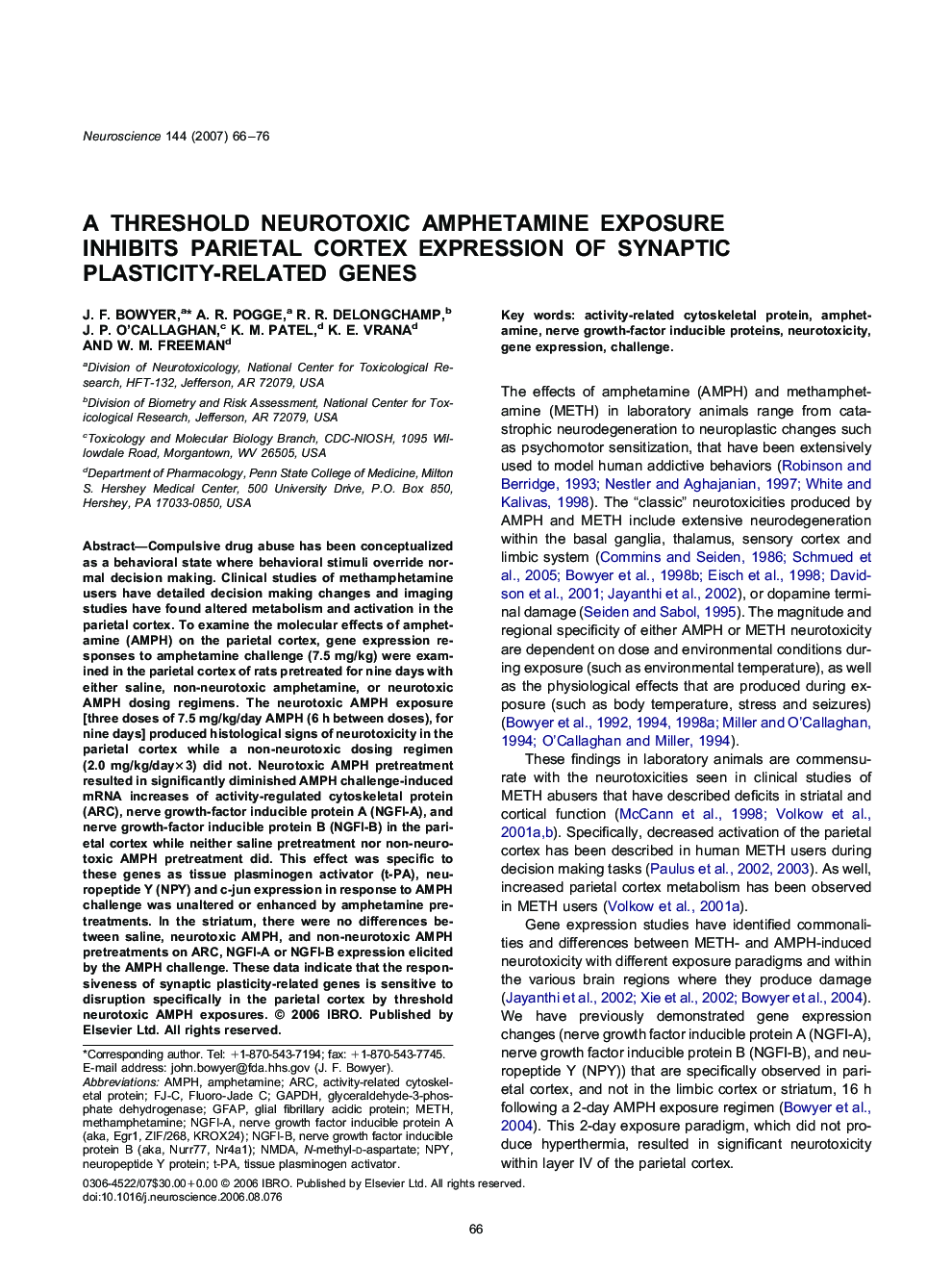| Article ID | Journal | Published Year | Pages | File Type |
|---|---|---|---|---|
| 4342339 | Neuroscience | 2007 | 11 Pages |
Compulsive drug abuse has been conceptualized as a behavioral state where behavioral stimuli override normal decision making. Clinical studies of methamphetamine users have detailed decision making changes and imaging studies have found altered metabolism and activation in the parietal cortex. To examine the molecular effects of amphetamine (AMPH) on the parietal cortex, gene expression responses to amphetamine challenge (7.5 mg/kg) were examined in the parietal cortex of rats pretreated for nine days with either saline, non-neurotoxic amphetamine, or neurotoxic AMPH dosing regimens. The neurotoxic AMPH exposure [three doses of 7.5 mg/kg/day AMPH (6 h between doses), for nine days] produced histological signs of neurotoxicity in the parietal cortex while a non-neurotoxic dosing regimen (2.0 mg/kg/day×3) did not. Neurotoxic AMPH pretreatment resulted in significantly diminished AMPH challenge-induced mRNA increases of activity-regulated cytoskeletal protein (ARC), nerve growth-factor inducible protein A (NGFI-A), and nerve growth-factor inducible protein B (NGFI-B) in the parietal cortex while neither saline pretreatment nor non-neurotoxic AMPH pretreatment did. This effect was specific to these genes as tissue plasminogen activator (t-PA), neuropeptide Y (NPY) and c-jun expression in response to AMPH challenge was unaltered or enhanced by amphetamine pretreatments. In the striatum, there were no differences between saline, neurotoxic AMPH, and non-neurotoxic AMPH pretreatments on ARC, NGFI-A or NGFI-B expression elicited by the AMPH challenge. These data indicate that the responsiveness of synaptic plasticity-related genes is sensitive to disruption specifically in the parietal cortex by threshold neurotoxic AMPH exposures.
